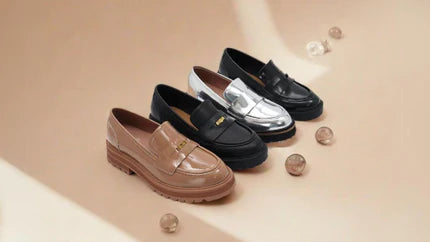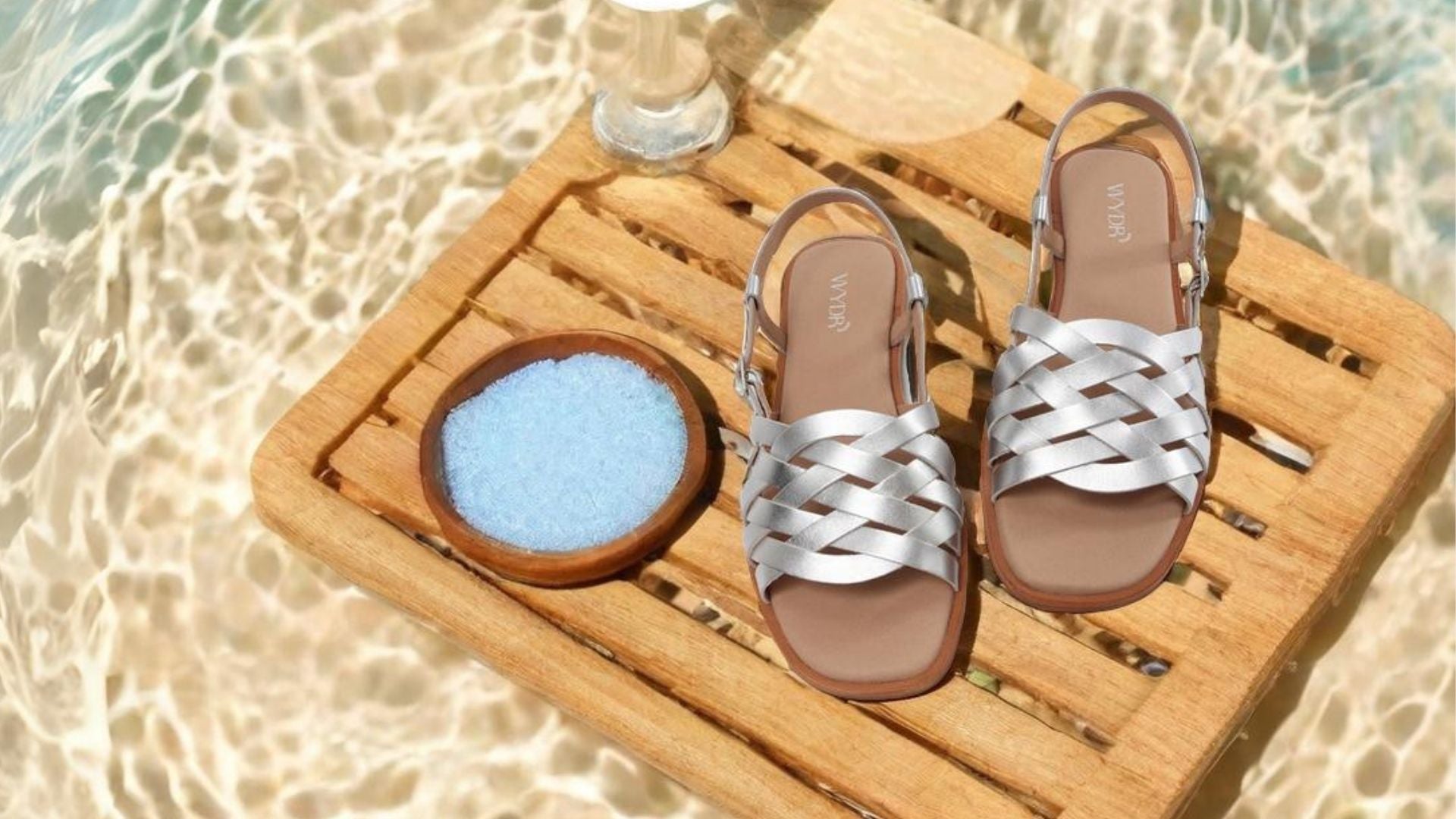Going on a trip should be fun, but if your feet hurt, it can really take the joy out of exploring. Have you ever thought about how your feet feel when you're out and about, taking in new sights? This is where choosing the right shoes, especially wide ones, makes all the difference. In this article, we’re going to talk about how roomy shoes can transform your travel experience, making foot pain a thing of the past. We'll explore common foot problems, how a wider fit helps tackle them, and share top tips to help you find that perfect pair of unnoticeable, ultra-comfortable shoes.
Common Foot Issues When Traveling and What Causes Them
Traveling can be tough on your feet. Whether you're standing in line at the airport, wandering through museums, or hiking up mountain paths, your feet can take a beating. Here's what you might encounter:
- Plantar Fasciitis: The intense heel pain known as plantar fasciitis often rears its head when you've been walking a lot, especially if you're not used to it or if you're wearing shoes without proper support. Your plantar fascia is a band of tissue that runs along the bottom of your foot, and overuse can inflame it, leading to this painful condition.
- Blisters: Those new travel shoes might look great, but breaking them in on a trip can cause friction against your skin, resulting in blisters. Long walks and warmer temperatures only increase the risk, as feet swell and sweat more, creating the perfect storm for blister formation.
- Swollen Feet and Ankles: Edema, or swelling in the feet and ankles, is common during long flights or car rides due to limited movement, which affects blood circulation. The change in cabin pressure and sitting for extended periods can also cause your feet to expand.
- Athlete's Foot: This fungal infection thrives in warm, damp environments like sweaty socks and shoes. When you're on the go, you may not have the chance to air out your feet or may find yourself in communal showers, increasing the risk of picking up athlete's foot.
- Bunions and Hammertoes: Long-term pressure on the feet from walking or standing can exacerbate existing conditions like bunions(painful bony bumps) and hammertoes (toes that are bent at the middle joint). Ill-fitting shoes contribute significantly to these issues.
- Corns and Calluses: These areas of thickened skin can form when there’s too much rubbing or pressure on one part of the foot, often from tight or uncomfortable shoes. While they're usually just cosmetic issues, they can become painful if left untreated
- Achilles Tendonitis: The Achilles tendon connects your calf muscle to your heel bone, and too much walking, especially uphill, can inflame it. Poorly fitting footwear and a sudden increase in physical activity are common culprits when traveling.
- Stress Fractures: A sudden increase in physical activity can lead to stress fractures, tiny cracks in the bone. This is particularly common in travelers who suddenly switch from a sedentary lifestyle to walking miles each day exploring a new city.
- Ingrown Toenails: Shoes that don't fit properly can cause toenails to grow into the skin, leading to ingrown toenails. Combined with increased activity and possible neglect of routine foot care while traveling, this issue can become quite painful.
-
Heel Spurs: These are caused by calcium deposits that build up under the heel bone, often due to wearing shoes without proper support and walking on hard surfaces—a frequent scenario during travel.

Why Choose Wide Fit Shoes for Travel
1. Cushioning Heels and Soles for All-Day Explorations:
A spacious interior in wide fit shoes isn't just about room; it's about providing a sanctuary for your feet. For those with plantar fasciitis or at risk of heel spurs, the additional space allows the foot to flex naturally, reducing the strain on the sole and offering a cushioned resting place for the heel. This means fewer aches and more miles covered in comfort.
2. Toe Freedom to Ward Off Blisters and Accommodate Swelling:
Our feet have a tough job, especially when we're seeing the sights from sunrise to sunset. With wide shoes, your toes aren’t cramped together; instead, they have space to spread out. This natural positioning prevents blisters caused by friction and also allows for the inevitable swelling that comes from walking all day or sitting during long flights. The result? You can walk through historic cities or nature trails without the distraction of painful pressure points.
3. Reducing Friction and Enhancing Breathability Against Foot Ailments:
When you’re traveling, your feet can become hotbeds for discomfort if not properly cared for. Corns and calluses form where there’s constant rubbing, while moist conditions can lead to fungal infections like athlete's foot. A wide fit shoe combats these issues by lowering the chance of chafing and improving breathability around the toes. This reduces excessive moisture, making the environment less inviting for fungi and keeping your feet in top exploring condition.
4. Alleviating Pain from Bunions, Hammertoes, and Ingrown Toenails:
Footwear that squeezes and pinches can make existing conditions like bunions, hammertoes, and ingrown toenails unbearable, turning every step into a grimace. Wide fit shoes are designed to give these vulnerable areas the space they deserve. By avoiding extra pressure and friction, you can prevent the exacerbation of these painful issues and enjoy your journey with peace of mind.
5. Targeted Support to Prevent Achilles Tendonitis and Ankle Strain:
Achilles tendonitis and ankle strain are often the result of insufficient support, something travelers cannot afford when adventuring through new terrains. Wide fit shoes provide targeted support around the heel and ankles, facilitating proper alignment and reducing strain on the Achilles tendon. This focused care ensures that whether you're pacing through museums or climbing up hills, your movement remains unrestricted and pain-free.

Tips for Choosing the Right Wide Shoes for Travel
1. Seek Adjustable Features for Swelling Adaptation
For long-haul flights where feet tend to swell or for extended city tours where comfort is key, shoes with adjustable laces, straps, or buckles are invaluable. They offer the flexibility to modify the fit as needed, providing relief and customization throughout your journey.
2. Select Lightweight Materials for Less Fatigue
Whether you’re hiking up trails or navigating urban landscapes, shoes constructed from materials like advanced synthetics or fine leather alternatives can offer resilience without adding weight, reducing leg fatigue during those full-day outings.
3. Opt for Breathable Designs for Air Circulation
In hot and humid destinations, or on days packed with back-to-back activities, shoes with breathable uppers utilizing mesh-like fabrics help maintain airflow, keeping feet cool and preventing excessive moisture which could lead to blisters.
4. Look for Cushioned Footbeds for All-Day Support
Sightseeing often means hours on your feet. Look for shoes with thick, yielding footbeds made of foams that conform to the contour of your feet, offering sustained comfort from dawn until dusk.
5. Choose Flexible Soles for Ease of Movement
Whether you’re walking through airports or exploring cobblestone lanes, flexible soles that bend easily with your foot's natural movement are essential. This adaptability ensures a smoother gait and reduces the chance of fatigue.
6. Prioritize Slip-Resistant Outsoles for Safety on Varied Terrains
If your travels include destinations with rainy weather or boat excursions, slip-resistant outsoles with ample traction are crucial for safety. Design elements like deep grooves prevent slips and falls on slick or uneven terrain.
7. Ensure Good Arch Support to Distribute Weight Evenly
Proper arch support matters greatly when your itinerary includes visits to museums, historical sites, or any extensive on-foot exploration. Well-defined arch support helps minimize discomfort across various walking surfaces.
8. Choose Roomy Toe Box for Freedom of Movement
A day of touring can mean swollen toes by nightfall. A spacious toe box allows for this natural expansion, ensuring toes aren't cramped and that there's enough space to prevent rubbing and the formation of corns or bunions.
9. Opt for Travel-Friendly Fastening for Easy On and Off
When you're frequently transitioning between sightseeing and security checkpoints, shoes with easy fastenings such as slip-ons or zippers simplify the process, making them ideal for travelers looking to save time and hassle.
10. Go for Flat or Low Heels for Stability and Pressure Reduction
Navigating ancient ruins or boarding various modes of transport is more manageable in flat or low-heeled shoes, which help distribute your body weight evenly and provide a stable base, essential for both comfort and balance.
11. Ensure a Sturdy Heel Counter for Better Foot Alignment
A reinforced heel counter offers additional support, particularly important when traversing uneven paths like nature trails or historic districts with irregular pavement, contributing to overall foot stability and alignment.
Additional Tips for Reducing Pressure on Feet and Toes for a Pleasant Journey
While wide-fit shoes with ample toe boxes are critical for foot comfort during travel, there are several other strategies you can employ to ensure your feet remain happy and healthy. Here are some extra tips to keep in mind:
- Mindful Packing: Heavy luggage can mean more weight on your feet. Pack light to reduce the burden on your body as you move from place to place. Consider using a backpack with proper support or a suitcase with smooth-rolling wheels to lighten the load.
- Proper Socks: Invest in high-quality socks that wick away moisture and provide extra padding in key areas like the heel and ball of the foot. Compression socks can also be beneficial, especially during long flights, to help with circulation and reduce swelling.
- Stretching and Flexing: Regular stretching can help prevent foot pain, especially if you're going to be walking a lot. Take a few minutes each morning and evening to stretch your calves, ankles, and toes. Simple exercises, such as rolling a tennis ball under your foot, can massage the fascia and help relieve tension.
- Taking Breaks: When exploring, take short breaks to rest your feet. Elevate your legs when possible to improve circulation and reduce swelling. If you have a busy day ahead, plan some sitting activities, like enjoying a coffee at a local café or taking a bus tour.
- Hydration and Nutrition: Staying hydrated keeps your joints lubricated, and your tissues resilient. Additionally, certain nutrients like potassium can help prevent cramps and support overall foot health. Snack on potassium-rich foods like bananas or oranges throughout your trip.
-
Cold Therapy: After a long day of sightseeing, soak your feet in cold water or use a cool pack to reduce inflammation and soothe sore muscles. This can be particularly refreshing if you're traveling in a hot climate.

Choosing Wide Shoes for Your Travel Adventures
Wide shoes can make or break your travel experience. If you’ve ever ended a day with sore, cramped feet, you know how important the right fit is. We’ve explored how to figure out if you need wide shoes, why some of us have wider feet, and how to choose the best pair for your travels. The bottom line is, comfortable footwear is essential when you're away from home. By choosing shoes that are roomy, supportive, and easy to adjust, you'll be ready for all-day adventures without the pain. When your feet feel good, exploring becomes a joy.



